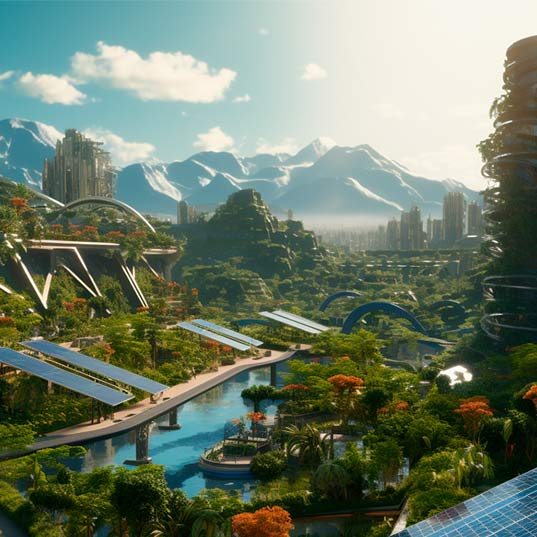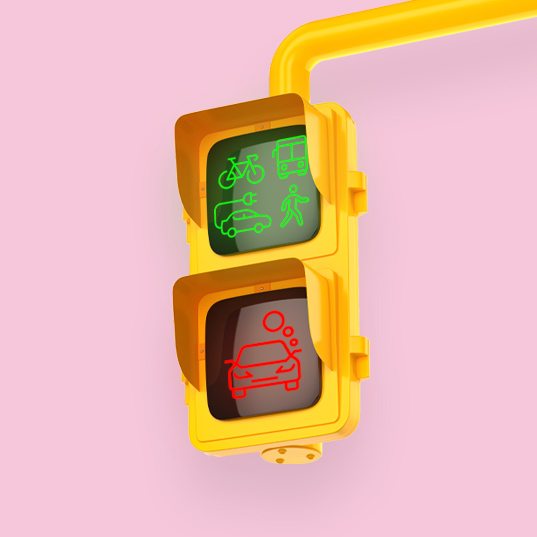Can CO2 be recycled? A story about the circular economy
Clothes, furniture, bottles… do you know what can be manufactured from CO2 to drive sustainable consumption?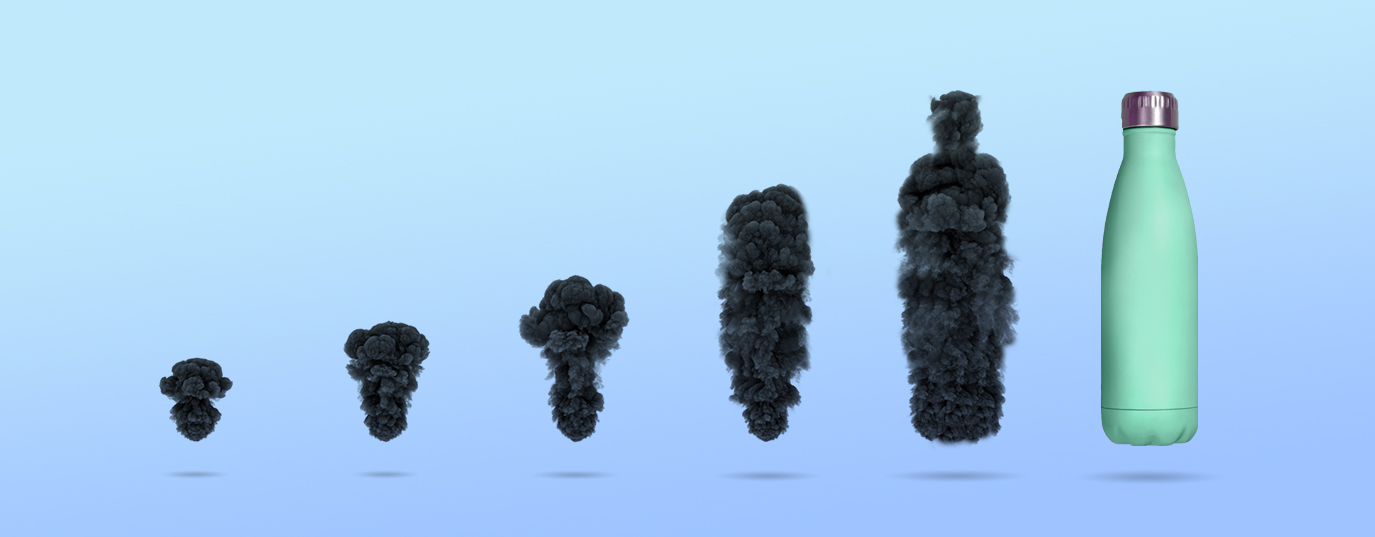
The energy transition is necessary to stop global warming, but it won’t be enough to limit the rise in temperature to 2°C. This is the warning from the Intergovernmental Panel on Climate Change, which has been saying for some time that ‘negative emissions’ will be needed and the excess of carbon dioxide present in the atmosphere will have to be captured if we want to avoid the worst climate scenarios. Fortunately, innovation is on our side and several projects already exist to exploit CO2, catching and transforming it into raw materials for manufacturing a wide variety of objects that lead us down the path of sustainable consumption.
What will I learn from this article?
- Circular economy and sustainable consumption based on CO2
- A home furnished thanks to sustainable consumption
- Clothes and shoes produced from emissions
- Packaging made from recycled CO2
Transforming CO2 from pollutant to raw material
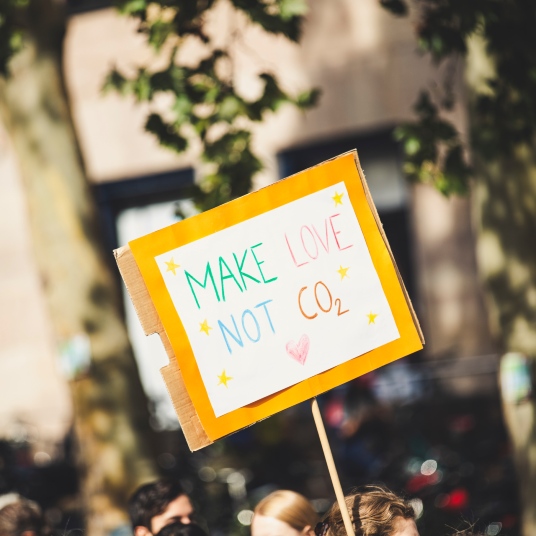 Rush hour on a Friday afternoon. The road you’re driving on is full of cars, trucks and motorcycles. All of you are leaving work at the same time and cannot wait for your weekend to start.
Rush hour on a Friday afternoon. The road you’re driving on is full of cars, trucks and motorcycles. All of you are leaving work at the same time and cannot wait for your weekend to start.
But there’s gridlock on both sides of the road, the corporations you emerged from continue to operate, with lights on and thousands of devices working. And if you look above, you’ll see a pair of airplanes crossing the sky in opposite directions.
The common denominator in this whole scene? Carbon dioxide. We’re currently a very long way from achieving the carbon neutrality that plans like the Paris Agreement demand and which have the goal of limiting the temperature rise to 1.5°C above pre-industrial levels.
We live in a world that still needs to burn fossil fuels to maintain our lifestyle. And, although big advances are being made through the promotion of renewable energies and the circular economy, there’s still a long road ahead if we want a system based on sustainable consumption.
But what if we could use the CO2 we emit to produce other things? The main idea continues to be to stop producing CO2, but, with the energy transition still gaining momentum, one idea is to take the CO2 we emit to the atmosphere and convert it into useful materials to manufacture clothes, utensils, furniture, etc. This is more viable than you might imagine, with several projects currently underway to convert CO2.
CO2 furniture to promote sustainable consumption
Back to the Friday afternoon rush hour. The gridlock is over, you’ve managed to park and arrive home. It’s the moment for a nice siesta on a mattress made from emissions. Yes, really! CO2 can be used as a raw material for home furnishings.
Several polymer companies have managed to convert CO2 into polyurethane, a material used in construction for insulating foams, glues, textiles, mechanical pieces and even furniture. As such, the carbon dioxide used in the process ends up being converted into a comfortable mattress, or filling for a sofa. An innovation that means you can furnish your home thanks to sustainable consumption.
Clothes and shoes produced from emissions
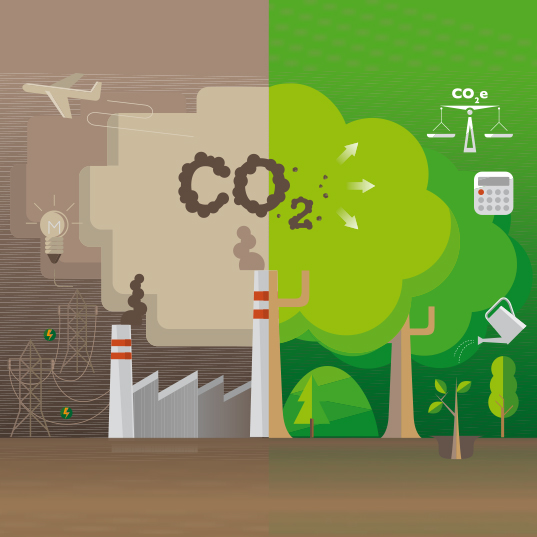 In the same way we can obtain polyurethane for furniture, we can also get foam for sports shoes from carbon dioxide. The aim is to replace the soles of footwear, currently made with EVA, with this new sole made from emissions. A good way to shoot up the field in the race against climate change.
In the same way we can obtain polyurethane for furniture, we can also get foam for sports shoes from carbon dioxide. The aim is to replace the soles of footwear, currently made with EVA, with this new sole made from emissions. A good way to shoot up the field in the race against climate change.
But the sustainable consumption of clothing is not just for sport, it can provide glamour and elegance, too. Startup LanzaTech has captured carbon emissions in order to manufacture a silky black fabric suitable for dresses and other evening wear. It uses microbes to convert emissions, captured in a Chinese steel mill, into ethanol, a substance normally produced from fossil fuels. Then this ethanol is processed into mono ethylene glycol (MEG), one of the components used to make polyester. In this way, the clothes contain a portion of the carbon dioxide emissions, and the rest of the gas is reconverted into something else useful to people.
Packaging made from recycled CO2
Single-use plastics are steadily disappearing from society. As their name indicates, they are used just once and often thrown away without recycling - among them bottles, which we use daily. Not only do they pollute ecosystems, but also need more resources and energy to produce.
Fortunately, ethanol can also be used to make plastic bottles for the likes of milk shakes and household cleaning products. The innovative packaging made by recycling CO2 reduces the consumption of petroleum, traps greenhouse gases, and can easily be incorporated into existing recycling systems.
All this, however, is currently only happening on a small scale, since the technology is still expensive and at an initial development stage. But this could change as it evolves and companies continue to search for ways of reducing their carbon footprint.
But, of course, the most efficient way of being carbon neutral is still to avoid emission of the gases responsible for global warming in the first place.
Sources:




